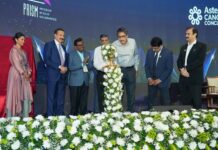Children’s Automated Respirator Monitor to be manufactured in India to better diagnose main cause of death amongst children aged 0-5 years
New Delhi, November 22, 2015: Philips today announced a Children’s Automated Respiration Monitor prototype that is aimed to help improve the diagnosis and treatment of pneumonia in India, potentially preventing many of the 935,000 childhood deaths caused by pneumonia each year. The respiration monitor will undergo further research and validation as part of the ongoing project.
Accounting for over 15 percent of child mortality worldwide, India loses a child every minute to pneumonia. Rajasthan, Uttar Pradesh, Madhya Pradesh, Assam and Bihar are some of the main pneumonia prone states in the country. Each year, the infection kills more children than AIDS, malaria and tuberculosis combined and remains the leading infectious cause of death among children under five years of age. Global child health organizations like UNICEF have made pneumonia a key area of focus in its effort to reduce child mortality in underdeveloped countries throughout the world.
One important aspect in diagnosing pneumonia is monitoring a child’s breathing rate. In developing countries, community health workers manually count how many breaths a child takes in the span of one minute. The Philips Children’s Automated Respiration Monitor converts chest movements detected by accelerometers into accurate breathing counts, using algorithms aligned with World Health Organization (WHO) guidelines to diagnose fast breathing rates, tailored to the way children’s chests move during breathing. Accurate diagnosis would ensure that children with pneumonia receive the antibiotics they need, potentially preventing many of the deaths caused by pneumonia each year.
Mr. Srinivas Prasad, CEO, Philips Innovation Campus says , “One of our focus areas has been to make a difference in the markets that have persistent healthcare challenges and help them overcome barriers to treatment and care. Philips Children’s Automated Respiration Monitor being one such innovation is clearly driven to reduce child mortality and is a solution well suited for underdeveloped and developing nations. This innovation can become a game changer in diagnosing and treating pneumonia and will be affordable for healthcare and community workers globally.”
The respiration monitor is a “Make in India” product and will be manufactured at the Philips factory in Pune for the Indian and global markets. The product being the first of its kind, Philips is working both with local end users, as well as key stakeholders in the global health community to ensure that the monitor design and functionality will meet their needs on the ground.
Philips is currently working with various leading global child health organizations to conduct field trials with the next generation of prototypes in key markets where child mortality due to pneumonia is high.





















